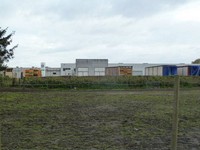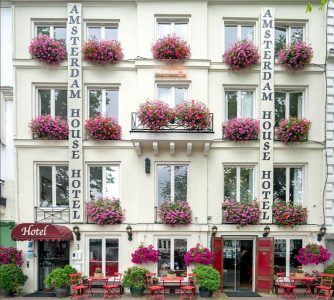
The manager of this plant was open to our unnanounced visit and gave us a short tour inside his plant on the spot. We were however not allowed to take photos.
Roughly 70,000 “spent” hens are slaughtered and processed in this plant every day. Six trucks loaded with plastic poultry-crates were in the parking lots. The crates were stacked stably but there were several chickens with their neck and head outside the crates, as some crates were slightly broken.
Both crates and drawer-containers are being used by this plant to transport the hens. This plant uses a 2-phase CO2 gas-stunning system to render the hens unconscious. The spent laying hens are kept in their crates and containers during the stunning process, which is a very significant improvement to their welfare, because the birds do not need to be unloaded or hung upside down, as done in most other “spent” hen plants. The unloading and shackling procedures are known to cause the most stress and injury to hens during slaughter.
The crates they use are diamond-shaped with sliding doors on the top. The special shape creates extra gaps to optimize the ventilation during transport. The design of the sliding door on the top of the crate avoids the limbs or head of the chicken being stuck during loading; the door can only be closed manually through which people cannot neglect the “obstacle” between two pieces of sliding door. Unfortunately, like with all the crates and containers we have seen for poultry transport, there is no possibility to access the chickens during transport. The gaps in the container-drawer system (between the container and metal frame) are ideal: small enough to prevent the birds from falling out of the crates but large enough so that the birds do not become stuck. Nevertheless, it is important that the catchers load them carefully, as accidents could still happen. Compare to broilers, laying hens are normally more active an can jump up making the drawer container system possibly difficult to use without causing stress to animals.
This slaughterhouse made the best impression on us in terms of animal-welfare because the most stressful parts of slaughter were removed from the system: no live-shackling, no unloading, no human-handling. We will promote this system to other chicken slaughterhouses we are in contact with, also internationally via our Taskforce.

